My favorite capabilities at 23andme are: finding new relatives with DNA and comparing them in the chromosome browser, looking at my ancestry composition in depth, and having the ability to look up specific genes. Most of the recent changes at 23andme are to the ancestry composition tools, specifically there is more granularity in the areas it shows for your ancestors’ origins.
With three generations of Munsons on 23andme, thanks to my niece’s recent test, I can finally evaluate the GrandTree. This tool, found on the Family & Friends menu, lets you look at what you inherited from each grandparent. Not surprisingly my niece LM got way more from my mother, whose mother she strongly resembles, than from my Dad. There is no guarantee that you will get exactly 25% from each grandparent. In my case, I got more from my maternal grandfather which I deduce from my 28% jewish ethnicity.
This tool will look at the traits and health items tracked through the generations even if you did not buy the health reports. This will be discussed in more detail later in this article. Meanwhile, I will do a quick review of the current 23andme basics as a guide for my niece and any other new testers reading this.
Finding DNA relatives and comparing them in the chromosome browser
Click on DNA relatives on either the Ancestry menu or the Family & Friends menu to look at your cousin list. Here are my previous posts on this topic, still fairly accurate:
- Click here for my post on using the DNA Relatives match list. Note that the information your matches see about you can be changed or added to by clicking Settings in the drop down menu on the top right under your name and initials or picture if you uploaded one.
- Click here for my post on the page for a specific match and using the chromosome browser. Note that there is no longer a click point on the DNA relatives page to go straight to the chromosome browser. Instead just click on DNA Comparison on the drop down menu under Family & Friends.
- Click here for my discussion of the automated triangulation feature found at the bottom of the page for a specific match.
Looking up a specific gene
You can look up a specific gene or marker in the Browse Raw Data function which is found on the menu under your name. Click here for my blog post about the AIDS resistant gene which details how to do that type of look up.
Ancestry Composition
The great thing about the ancestry composition display at 23andme is that it shows you the details by chromosome. None of the other testing companies do that. What’s more if you put your cursor on a specific ethnicity, it will highlight just those segments on the diagram. Click on Ancestry Composition on the Ancestry menu to get to the page with the most details, including the chromosome by chromosome display.
One caveat is that the default display is at the 50% confidence level which is clearly more fun. Only when I changed it to 90% could I get rid of that impossible Native American …
I find it interesting to see how little has changed in this image from my 2012 post on 23andme display by chromosome (click here for that). The improvement is that I am now 44.6% Scandinavian instead of 24%, apparently the non-specific Northern Europe is now correctly assigned to Scandinavia. I expected closer to 50% since my father is a Norwegian American with all Norwegian ancestry except one German 4th grandfather and one Swedish 5th grandad.
A very nice feature is being able to see what you got from each parent if you have at least one parent tested. Since my ancestors are recent immigrants from Europe, I am puzzled by the Native American & East Asian from my mother. Further investigation shows that my maternal aunt Trudi has the same East Asian section on chromosome 6 that I do. My brother and niece have it on a bit of chromosome 17. However anything less than 1% always seems dubious to me.
On the display at the top of the Ancestry Composition page or on the Ancestry Overview page it shows you your various ethnicities often broken down into more specific locations. This is the improved granularity that I had mentioned. You can click on any right arrow to get to the report for that ethnicity. Here is my amazingly accurate Scandinavian report.
The ancestor timeline feature is interesting but I am not sure how accurate or useful it is. Click here to read my discussion of that towards the end of a 2017 article.
Your motherline and fatherline haplogroups are shown on the All Ancestry Reports page. The fatherline, paternal haplogroup, only shows if you are male, unless you are a female with a tested father. You can get to the details by clicking on the haplogroup there or from the Ancestry Overview page. These pages are on the Ancestry drop down menu. If your ancestors are mainly European, I recommend reading more about your haplogroups on the Eupedia site at this page:
https://www.eupedia.com/europe/origins_haplogroups_europe.shtml
The GrandTree
This tool will show you how much DNA you have inherited from a grandparent, both the tested one and an untested spouse. Plus you can look at a number of specific traits like eye color, widows peak, curly hair, and so on. Additionally you can look at a specific gene or marker by entering it in the search box under the list of traits. My only complaint is that I have to put my niece’s dad and grandad in each time I come back to this page; it would be better if 23andme remembered that information. On the other hand, an advantage is that I can change the people viewed so I can actually use this tool from my own account for the three of them, since they are all shared connections with me.
I looked at the trait called “bald spot.” The good news is most of the male bald spot genes my niece got are from my father who had a full head of hair when he died at 96. This surprised me since I learned in school that the primary gene for going bald is carried on the X, so it is a sex-linked gene and her dad only got X from our mom, not our dad. This inheritance pattern means that far more men go bald than women because we have the protective effect of two X chromosomes and usually one does not include the baldness gene. Men are stuck with whatever they get from their mother. I have often noticed that my brother has my maternal grandfather’s balding pattern.
However I have now discovered that baldness is more complicated than a single gene on the X. I found this article that explains that: https://blog.helix.com/male-pattern-baldness-genetics/ and the technical details are laid out in the NIH article here: https://www.ncbi.nlm.nih.gov/pmc/articles/PMC5308812/
Thank you again my wonderful niece so very much for testing. I have whiled away hours playing with these tools and your results! Now get your maternal grandmother to test please …
UPDATE 28 June 2019: I meant to mention in this article, for those who have not tested at 23andme, that there is a tool to show what percent a grandchild inherited from a grandparent at Legacy Tree Genealogists (click here).
Plus I also meant to mention that you can see your messages from other users by clicking the bell on the top bar next to your image and name and then click the See all messages as only the invites show in the drop down, not the messages.
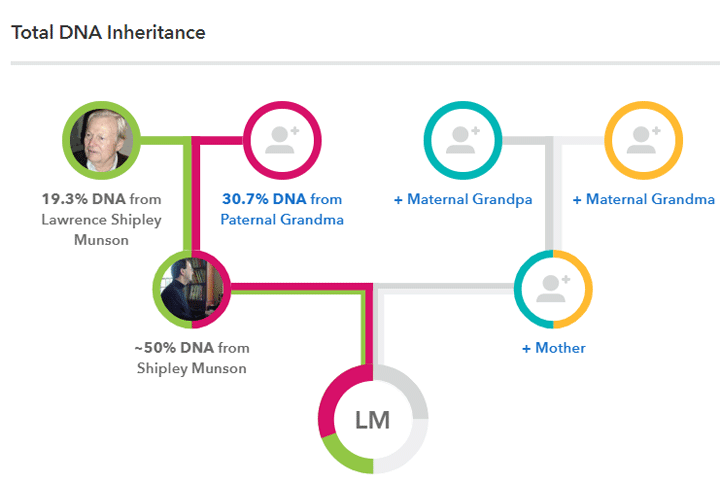
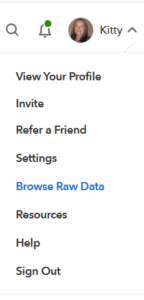
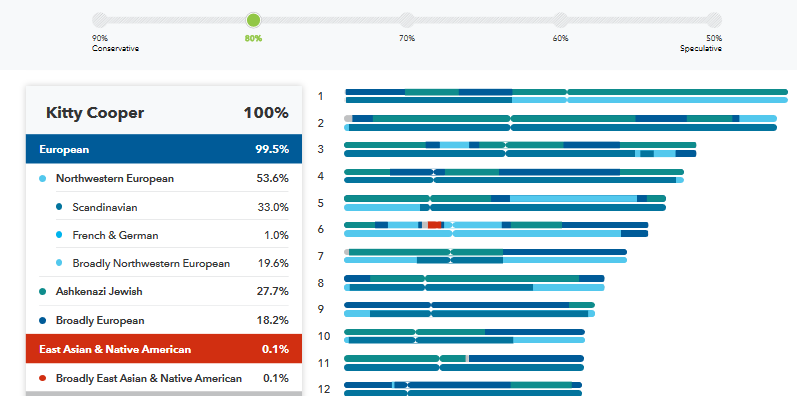
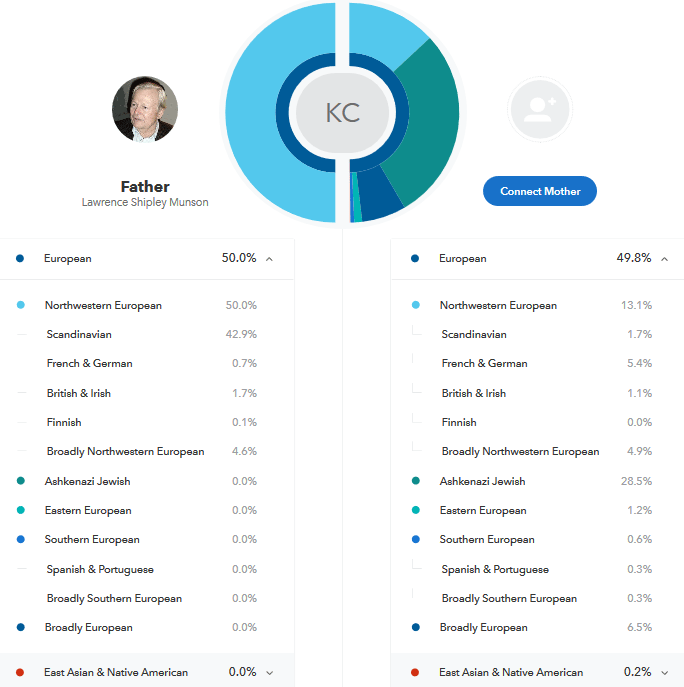
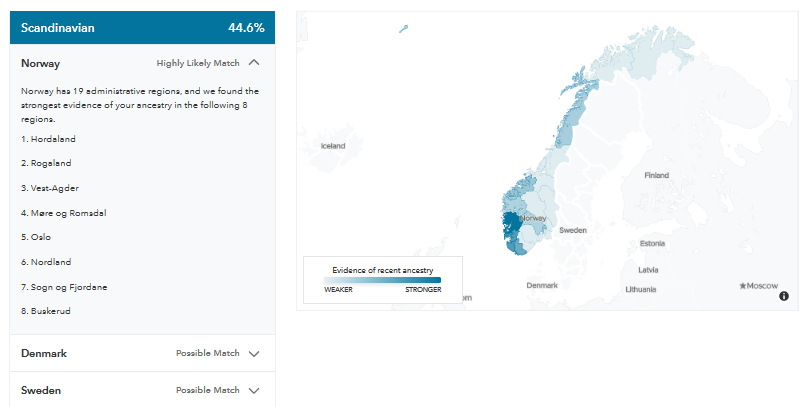
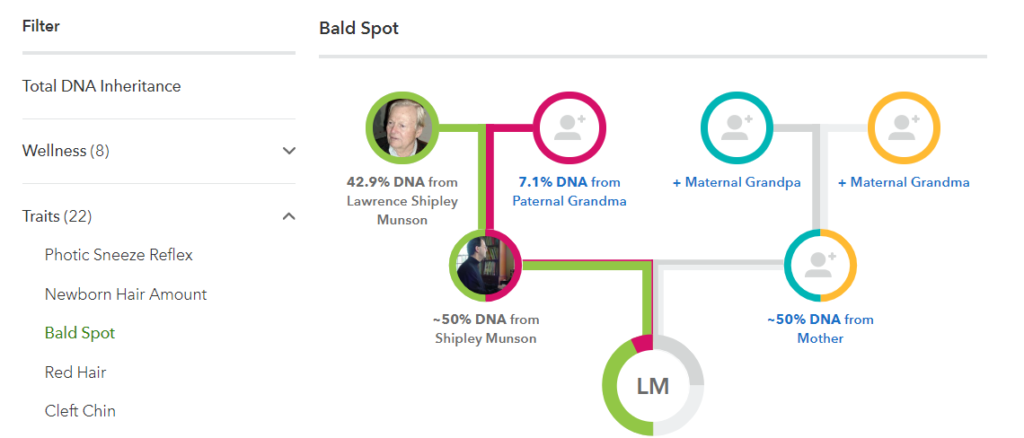
I “failed” with two 23andme kits and had to swear to never buy another 23andme kit in order to get my refund. I have been successful with other kits, however, and have since learned that processing failure is not uncommon with 23andme. Is there any chance they will figure out what makes processing failures happen? I’d love to be a beta tester for such tweaks!
Anne,
I have never heard of this issue. I doubt that they have any more processing failures than anyone else
I googled “23andme processing failure” (or something like that) and it apparently happens a lot although obviously not overwhelmingly! I was disappointed, even though I have my atDNA elsewhere. The lab my kit was sent to is about 30 miles from where I live unlike the other labs that were hundreds of miles away! Samples were done right, fresh, etc. I understand what they say about why it happens but since I was successful with ancestry & FTDNA, I did not understand why it happened to me with their kit!
Where did they hide the trees??
Kim, The trees went away a long time ago. Instead they let you link to your online tree elsewhere.I recommend using Wikitree since no log in is needed to see that tree and the privacy on the living is excellent.
See https://blog.kittycooper.com/2017/04/link-your-online-tree-to-23andme/
Thanks Kitty I do have a Wikitree account. I will connect that one to my profile at 23andMe. I would think they could make it more easier to find.
On your Ancestry Composition analysis, are you using the V4 or V5 chip? I’m wondering if this contributes to the improved granularity of your ethnicity estimate outcome.
Bryan – Actually I am back on V3, my niece on V5 has very good granularity
Interesting…I’m on the V4 chip. Do you see any advantage in testing again with the V5?
No I do not see a significant advantage.
You might test at another company to get the new chip, for example living DNA if you have any British ancestry. Then upload both to Gedmatch and Then combine them into a super kit https://blog.kittycooper.com/2019/04/make-a-combined-dna-kit-for-yourself/
I’m a V3 chip, and it’s more than a little annoying that they want me to pay $125 for V5 upgrade.
Great idea!
Whoops…this reply was meant for Kitty!
Cousin Neil, you do not need to upgrade. See my response to Bryan above …. Maybe test with ancestry if you want to do more testing on a different chip. They do a good job of filtering out the random bits of Jewish DNA in your cousin matching…
I was so upset how long it was taking for the v4 chip to update I went ahead and purchased the v5 chip for myself, Mom and sis. I didn’t like the fact that both results were shown as “twin”. Anyway, almost a year (?) later and the v4 chip is finally updated. I decided to retire the v5 chip results into the background. I love the features at 23andMe. I also have a paternal Aunt, Uncle, and cousins at the other companies along with the three of us.
Kitty, it’s great that under each Ancestry composition report you can give feedback. I used the “Help us improve this report” option to say exactly where my ancestors came from, in some locations quite deep ancestry. Based of course on my paper trail and confirmed dna matches from the same area. They had the British cities and counties sort of, but some specific areas not highly ranked in my list. The Irish counties did not really fit with family knowledge, but we could be wrong I guess.
It must still be a work in progress for 23andMe though, because my mother and myself have approx 3 percent Scandinavian (unbeknown to us) and the detail says “We’re working to identify your more detailed Scandinavian ancestry”.
Yes that is great, thanks for pointing it out!
Remember that those Vikings settled much of the North of England and Ireland so left plenty of DNA …
Pingback: 23andme: Now and Then | Kitty Cooper's Blog